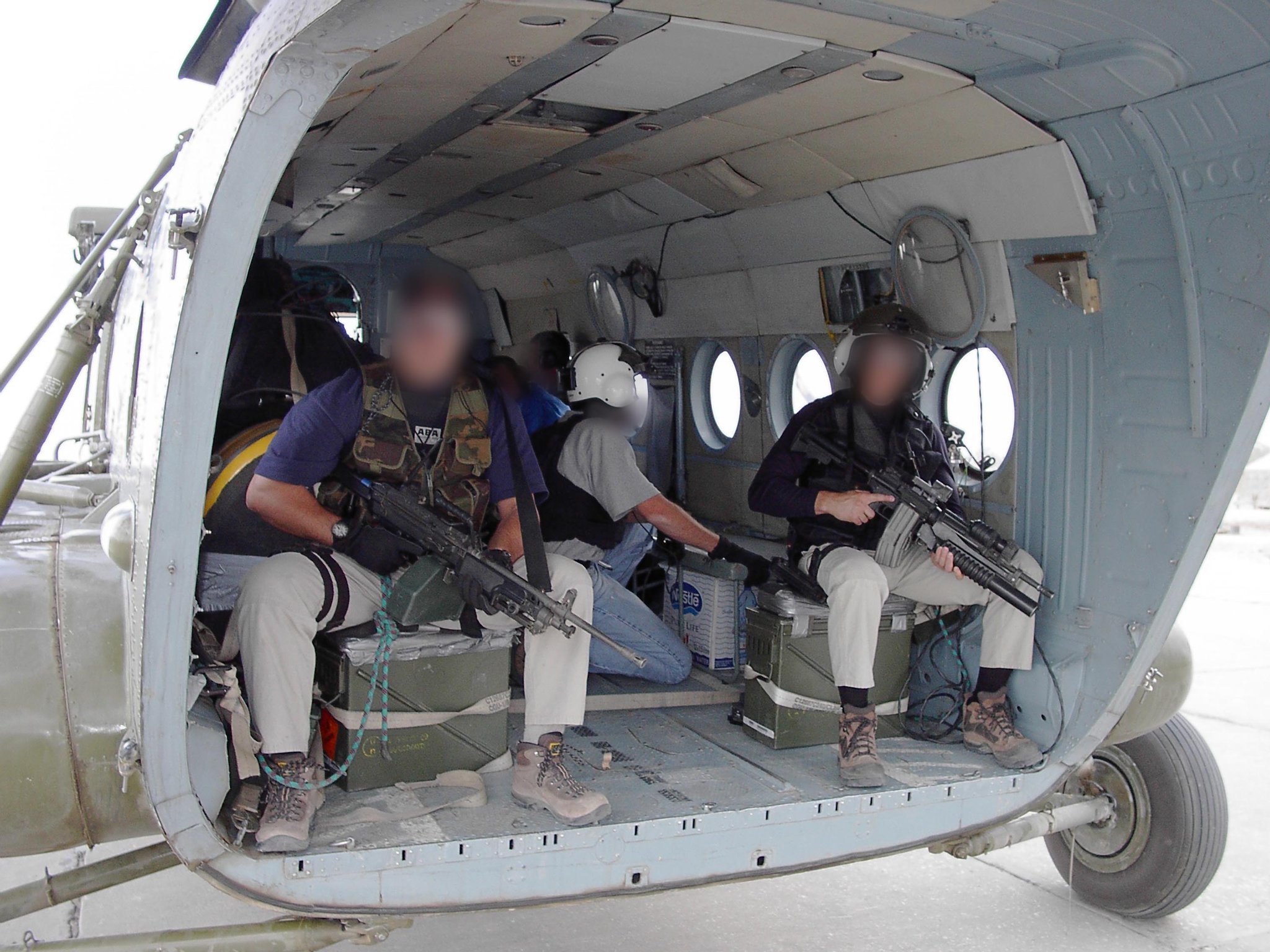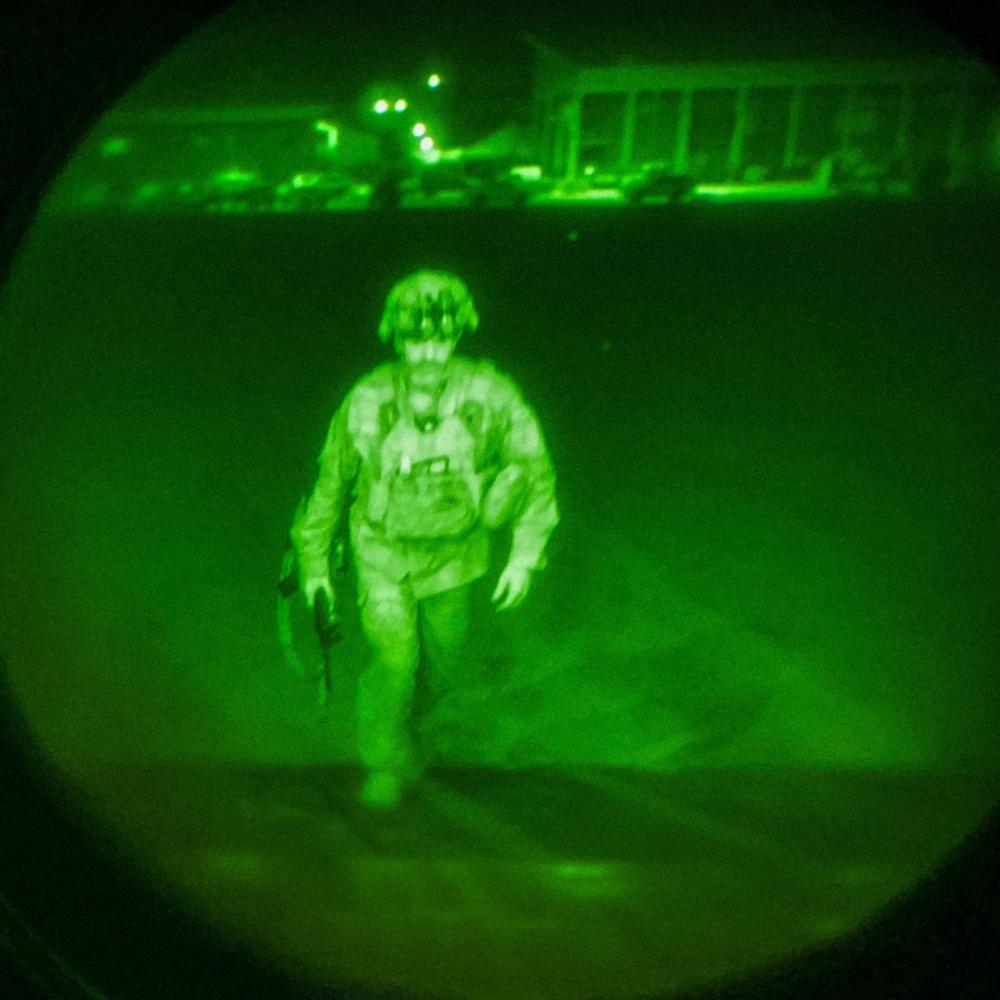The two images above aren't separated that much in terms of where they were taken geographically, but they deviate greatly in terms of how far apart they were taken in time. They represent the operation that would send the first Americans into Afghanistan to kick off the war there, as well as the greater Global War On Terror as we now know it, and the last American soldier to step foot on Afghan soil. The first image was taken on September 19th, 2001, the other was taken today, August 30th, 2021. They are now the alpha and the omega of America's war in Afghanistan, visually speaking.
The image taken on September 19th, 2001 shows CIA operatives aboard a Mi-17 helicopter in Uzbekistan. In the following days, the CIA would make its first clandestine flight into Afghanistan. We did two separate stories on the circumstances surrounding this historic image, which you can check out here and here, but this is our description of it, specifically:
The image shows the open rear of a Russian-built Mi-17 with heavily armed men sitting on ammunition cans in the back with just ropes tied around them to ensure they don't fall to their death if they slip out the back during flight. The mission depicted took place on September 19th, 2001, just eight days after the attacks on 9/11. The CIA says it was to pick up $3M in cash in three cardboard boxes. That money would be used to pay the Northern Alliance to spearhead the fight against the Taliban and to buy the allegiance of local warlords.

This was the beginning of America's mission in Afghanistan. On September 26th, CIA operatives would fly into Afghanistan to make contact with tribal warlords and the leadership of the Northern Alliance, which opposed the Taliban. Millions in cash was used to buy their loyalty and jumpstart robust military operations. This operation, dubbed "Jawbreaker," would spark what became a blitz across the country spearheaded by U.S. special operators, American airpower, and the Northern Alliance, and would bring about the Taliban's fall from power. By November of 2001, the Taliban would be chased from Kabul. By December, they would no longer control any stronghold in the country and would subsequently morph into an enduring insurgent force.
Fast forward nearly 20 years and we have what will become the quintessential image of the war's end. It shows the commander of the U.S. Army's 82nd Airborne Division, General Christopher Donohue, stepping onto a C-17 under the cover of darkness. He had overseen the evacuation operations and was the last person aboard the last transport to leave the country at 11:59 pm on August 30th, 2021, ending the U.S. military's presence in the war-torn country.

In the time between the two photos, there were incredible examples of kindness and super-human bravery, as well as inhuman cruelty and evil. The breakdown of the dead reads as such, according to a recent piece by the Associated Press:
American service members killed in Afghanistan through April: 2,461.
U.S. contractors: 3,846.
Afghan national military and police: 66,000.
Other allied service members, including from other NATO member states: 1,144.
Afghan civilians: 47,245.
Taliban and other opposition fighters: 51,191.
Aid workers: 444.
Journalists: 72.
In addition, countless people were wounded, some severely, including over 20,000 American troops. Massive amounts of treasure was spent, as well. Some estimates put the cost of America's war in Afghanistan at $1 trillion and as high as over $2 trillion.
On behalf of our team to all of the 800,000 service people who served in Afghanistan over the years, and to those who served there in any other capacity, as well as their family members, we want to thank you for all your efforts and sacrifices. While America's overall military mission, and the strategies that defined it, in that country will be debated for many years to come, we must remember that the homeland never received another terror attack emanating from Afghanistan. I don't think many would have predicted that in the dark days following 9/11.
And even though the Taliban may be back in control of Afghanistan after 20 years of blood and treasure spent there, if there is one thing we should have learned over the last two decades, it is that Afghanistan's future is anything but set in stone.
Contact the author: Tyler@thedrive.com
